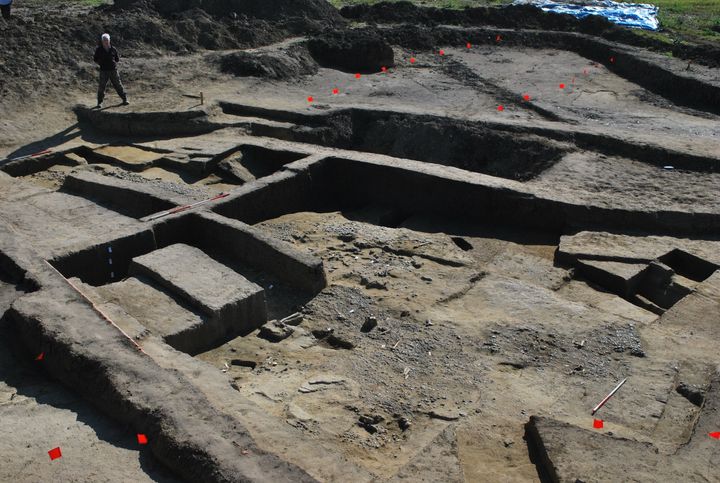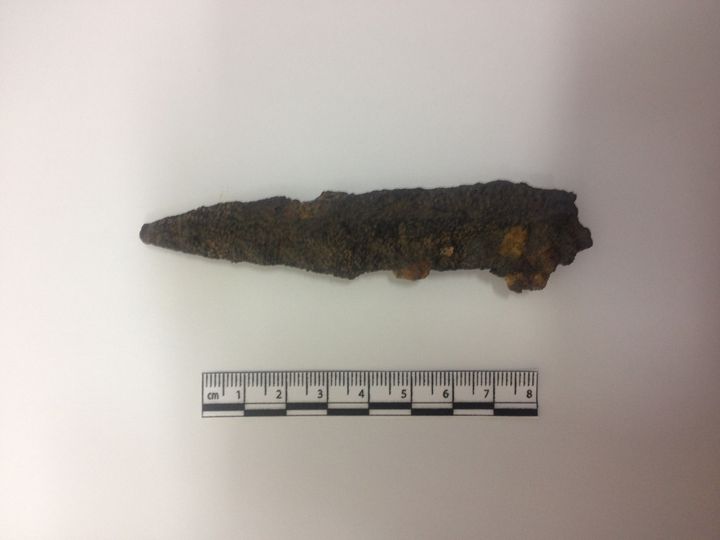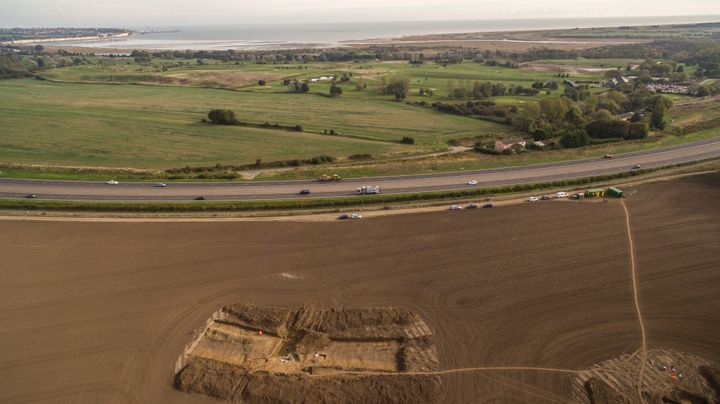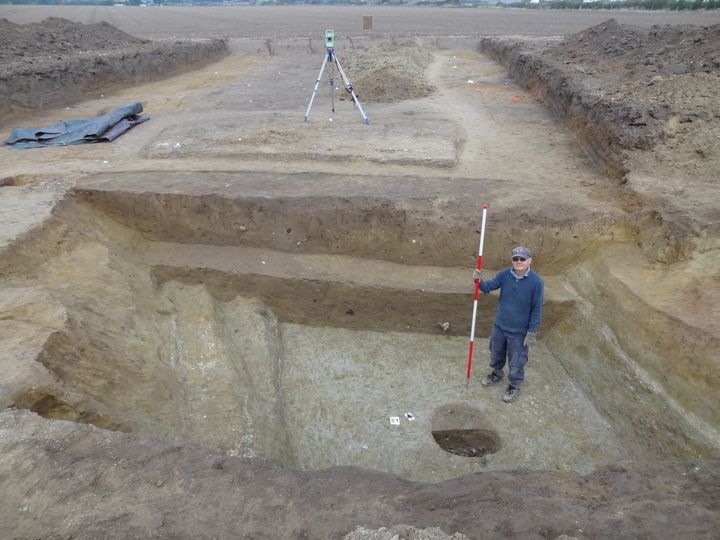The first evidence of the invasion of Britain by Julius Caesar has been discovered by archaeologists in Kent.
Artefacts such as iron weaponry, including a Roman pilium (javelin), along with the uncovering of a defensive ditch suggest that the site at Ebbsfleet, on the Isle of Thanet, was a Roman base in the 1st century BC.
They were found during preparations for building a road.

The finds, which will be fully revealed in BBC Four’s ‘Digging For Britain’, have lead a team from the University of Leicester to infer that Caesar’s first landing took place in 54BC at Thanet’s Pegwell Bay.
This would match the Roman emperor’s own account of his landing in 54BC with three clues about the topography of the landing site being consistent: the bay’s visibility from the sea, the existence of a large open bay, and the presence of higher ground nearby.
The site where the defence ditch, which measures around 4-5m wide and 2m deep was discovered is now 900m inland but at the time of the invasion, it would have been far closer to the shore.
Dr Andrew Fitzpatrick, research associate from the University of Leicester’s School of Archaeology and Ancient History said: “The site at Ebbsfleet lies on a peninsular that projects from the south-eastern tip of the Isle of Thanet. Thanet has never been considered as a possible landing site before because it was separated from the mainland until the Middle Ages.
“However, it is not known how big the Channel that separated it from the mainland (the Wantsum Channel) was. The Wantsum Channel was clearly not a significant barrier to people of Thanet during the Iron Age and it certainly would not have been a major challenge to the engineering capabilities of the Roman army.”


Fitzpatrick explained: “Sailing from somewhere between Boulogne and Calais, Caesar says that at sunrise they saw Britain far away on the left hand side. As they set sail opposite the cliffs of Dover, Caesar can only be describing the white chalk cliffs around Ramsgate which were being illuminated by the rising sun.
“Caesar describes how the ships were left at anchor at an even and open shore and how they were damaged by a great storm. This description is consistent with Pegwell Bay, which today is the largest bay on the east Kent coast and is open and flat. The bay is big enough for the whole Roman army to have landed in the single day that Caesar describes. The 800 ships, even if they landed in waves, would still have needed a landing front 1-2 km wide.
“Caesar also describes how the Britons had assembled to oppose the landing but, taken aback by the size of the fleet, they concealed themselves on the higher ground. This is consistent with the higher ground of the Isle of Thanet around Ramsgate.
“These three clues about the topography of the landing site; the presence of cliffs, the existence of a large open bay, and the presence of higher ground nearby, are consistent with the 54 BC landing having been in Pegwell Bay.”
The team has also suggested that, far from being a failure as many assume, Caesar’s invasions were actually seen as a triumph because victory was judged by beating opponents not occupying their lands.

Professor Colin Haselgrove, the principal investigator for the project from the University of Leicester, explained: “It seems likely that the treaties set up by Caesar formed the basis for alliances between Rome and British royal families. This eventually resulted in the leading rulers of south-east England becoming client kings of Rome. Almost 100 years after Caesar, in AD 43 the emperor Claudius invaded Britain. The conquest of south-east England seems to have been rapid, probably because the kings in this region were already allied to Rome.
“This was the beginning of the permanent Roman occupation of Britain, which included Wales and some of Scotland, and lasted for almost 400 years, suggesting that Claudius later exploited Caesar’s legacy.”
Digging For Britain is on BBC 4 at 9pm on 29 November.
